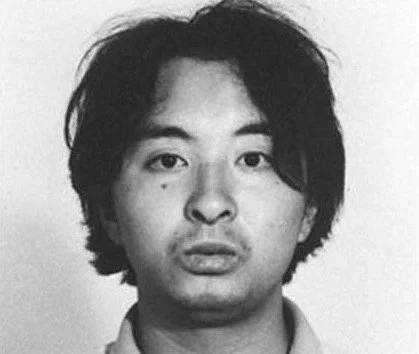Tsutomu Miyazaki: Japan's Child Killer
Thirty-three years ago today, Tsutomu Miyazaki was captured and taken into custody by police on charges of child molestation. As detectives spoke to him, however, Miyazaki admitted to the kidnapping and murder of four other young girls over the past year across Tokyo and the Saitama Prefecture, all to fulfill dark sexual fantasies related to young girls and their dead bodies. His capture sparked public outcry and horror amongst the Japanese public and raised questions as to the growing influences of glorifying innocence and violence throughout Japanese culture and its effect on those in society.
Miyazaki was 27 at the time of the murders, and the young girls he chose ranged between ages 4-7 according to Japan Today. After his arrest, he quickly confessed to killing the girls, who had been reported missing and then bodies later found, along with having mutilated and slept by their corpses, even consuming some of their flesh and blood before disposing of them. As investigators looked more into his life and explored his apartment, they found a collection of videotapes, mainly consisting of cartoons, but some of which showed scenes depicting bondage, mutilation, and pedophilic themes. Even one of his favorite films, Flowers of Blood and Flesh, may have inspired some of his dismemberment and brutality.
It is also in that collection that police found what they needed to secure a murder conviction, as in Japan it is necessary to have physical evidence in order to do so. According to the Los Angeles Times, while searching his things they found a video of him committing the dismembering of one of the victims. Additionally, they also found evidence of his involvement in letters sent by the killer to media and television stations, claiming responsibility as a woman, along with evidence of a box that was sent to one of the victim’s family with her remains enclosed.
At the age of 45, Miyazaki was hung for his death sentence on June 17, 2008. Throughout his trial and 16-year prison sentence, he never showed remorse for the killings he had done and the effect that they had on others, instead blaming the actions on a so-called “rat man.” Even before the Japanese Supreme Court ruled to impose the death sentence on him in February 2006, according to Japan Today he wrote to Kyodo News asserting his innocence and confusion at the time of the killings, believing that he was doing the right thing. Earlier in that year, a court did rule that he had signs of an extreme character disorder, such as possibly having multiple personality disorder or schizophrenia. However, despite these mental disorders he was deemed mentally competent at the time of his crimes, thus still bearing criminal responsibility.
According to the Los Angeles Times, this case profoundly impacted many of the Japanese public and was one of the biggest pieces of news at the time. By the media, he was characterized as a dark and depraved loner for his interest in snuff films and cameras. By targeting young girls, he was attacking those and the ideals that Japanese pop culture idolizes: the innocence and cuteness of young girls. By some writers of the time, such as the one who wrote an article entitled “Tsutomu Miyazaki Dwells Within Us,” Miyazaki is just an example of the rampant spread of rori-kon, or “Lolita,” style and subculture. They accuse Japanese pop culture of the time, particularly that most liked by young men, of leaning on the pedophilic with their fascination with youth, innocence, and the schoolgirl look. His case also raised questions about the makers of the violent pornographic comic book and video industries, as they clearly had a hand in shaping and forming Miyazaki’s and others’ brutal fantasies.
Miyazaki’s killings, despite not being the largest in number for a serial killer, still generated strong reactions from the public and raised important questions about how to move forward, what in society might need to be changed in order to avoid such a thing happening again.






